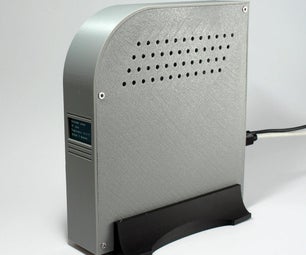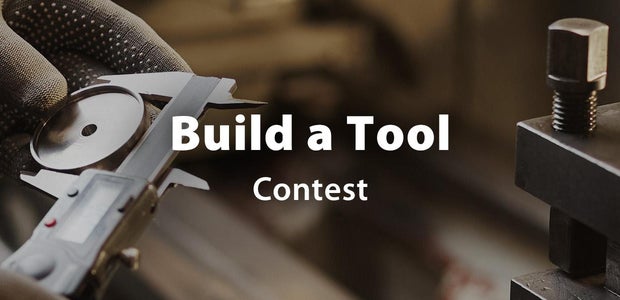Introduction: Arduino Based ECG & Heartbeat Monitoring Healthcare System
Introduction :
Heart disease was becoming a big disease which health killer people for many years.World Health Organization (WHO) research also shows that the most people was dying due to heart disease. Therefore, This disease can not be taken lightly. Hence, most health care equipment and monitoring system are designed to keep track the disease.
As we know that by analyzing or monitoring the ECG signal at initial stage these disease can be prevented.So i am working in this project .
Step 1: Methodology:
An ECG Sensor with disposable electrodes attaches directly to the chest to detect every heart beat. The electrodes of ecg sensor will conversion heart beat to electric signal. ECG Sensors is very light weight, slim and accurately to measures continuous heart beat and give rate data of heart beat. This device always use by trained doctor and medical assistances.
Electrodes of ECG Sensor have 3 pins and connected by cable with 30 inches in length. It is make ECG sensor easy to connect with controller and placed at the waist or pocket. In additional, the plug-in for the cable is a male sound plug which will make the cable to easily removed or inserted into the amplifier board.The sensor assembled on an arm pulse and a leg pulse. All of every sensor electrodes have methods to assemble in body. So, training and tutorials are needed for user. You can choose type of electrode to measure heart beat.
Step 2: Hardware and Software Requirements:
Hardware :
1)Arduino Uno/Mega/Nano
2)ECG Module (AD8232)
3)ECG Electrodes - 3 pieces
4)ECG Electrode Connector -3.5 mm
5)Power supply
6)Connecting Wires
Software Requirement :
1) Arduino IDE
Download from (https://www.arduino.cc)
2)Processing IDE
Download from (https://www.processing.org )
Step 3: Connections:
Connection of AD8232 with Arduino:
Arduino 3.3V --------- 3.3V pin
Arduino pin 10 -------- L0+
Arduino Pin 11 -------- L0-
Arduino Analog 1 (A1) ------- Output
Arduino Gnd ----------- Gnd
Electrode pad location shown in fig.
AD8232 Pins :
RA - Input 1
LA - Input 2
RL - Input 3
Step 4: ECG Module (AD8232) Specifications:
The AD8232 module breaks out nine connections from the IC that you can solder pins, wires, or other connectors to. SDN, LO+, LO-, OUTPUT, 3.3V, GND provide essential pins for operating this monitor with an Arduino or other development board. Also provided on this board are RA (Right Arm), LA (Left Arm), and RL (Right Leg) pins to attach and use your own custom sensors. Additionally, there is an LED indicator light that will pulsate to the rhythm of a heartbeat.
Features:
· Operating Voltage - 3.3V
· Analog Output
· Leads-Off Detection
· Shutdown Pin
· LED Indicator
· 3.5mm Jack for Biomedical Pad Connection or Use 3 pin header.
Step 5: ECG SIGNAL PARAMETER:
The figure above display of standard one cycle ECG signal from a heart beat. From the figure one cycle consist of P wave, QRS wave until T wave. P wave offers benefit information about the propagation time of the impulse to both atria. Then, follow with a flat trend called with the PR segment which is in consequence of propagation of the electric impulse from atria to ventricles. And follow with QRS complex wave which you can look in above figure. Q,R and S complex contains of three small wave i.e small Q wave, the high R wave and the small S wave. The QRS complex give information about the ventricular systole in consequence of the impulse propagation to the ventricles (Q wave), whereas the transmission to the whole tissue is caused by the R and S wave. The QRS complex provides information about fibrillation and arrhythmias, it can be helpful to analyze heart attacks. And then ST interval, it is following by the S wave and including with the T wave, it can point out the ischemia occurrences. It represents the period during which ventricles are contracting, which is the last stage of the heart cycle. The T wave permits one to have information about the cardiac hypertrophy, heart attacks, and ischemia. Moreover, others parameters, such as the QT interval, allow specific further pathologies to be characterized. Finally, the ECG signal ended with a small peak, U wave.
Table Normal ECG Parameters :
PhaseDuration Amplitude
P Wave 0.06-0.11 <0.25 PR
Interval 0.12-0.20 -
PR Segment 0.08 -
QRS Complex <0.12 0.8-1.2
ST Segment 0.12 -
QT Interval 0.36-0.44 -
T Wave 0.16 <0.5
Changes in parameters of ECG with Heart Diseases:
Abnormal ParameterEffect on Heart
1)Short QT Interval Hypercalcemia, Hyperkalemia
2)Long QT Interval Hypocalcemia
3)Flat or inverted T waves Coronary ischemia, hypokalemia,
left ventricular hypertrophy
4)Peaked T wave, Long PR,
QRS wide, QT short Hyperkalemia
5)Prominent U waves Hypokalemia
6)Increased HR Tachycardia
7)Decreased HR Bradycardia
8)Increased QRS Bundle branch block
9)Increased PR AV block
From the ECG parameters, analysis a Heart Rate Variability (HRV) of the ECG signal can be implemented. According to the parameters changes comparing to the normal parameters above, the system may predict which disease that the user potentially suffering from.
Reference: Wikipedia
Step 6: Arduino Program :
Download the .ino file and open it arduino IDE.Connect the hardware.
Output data in serial monitor is like :
658
654
456
567
432
Step 7: Processing Program:
For graphical representation download and open .pde file in Processing .Select the baud rate same as arduino .
Attachments
Step 8: Applications and Future Advancements :
Applications:
1)Fitness and activity heart rate monitors.
2)Portable ECG Remote health monitors.
3)Gaming peripherals.
4)Biopotential signal acquisition.
Advancements :
1) Data can be uploaded or directly sent to the doctors by using IOT Technology .
2) By using more electrodes measurement can be more accurate .
Thank You ,
Kindly like and share ..Thank You

Participated in the
Maker Olympics Contest 2016














